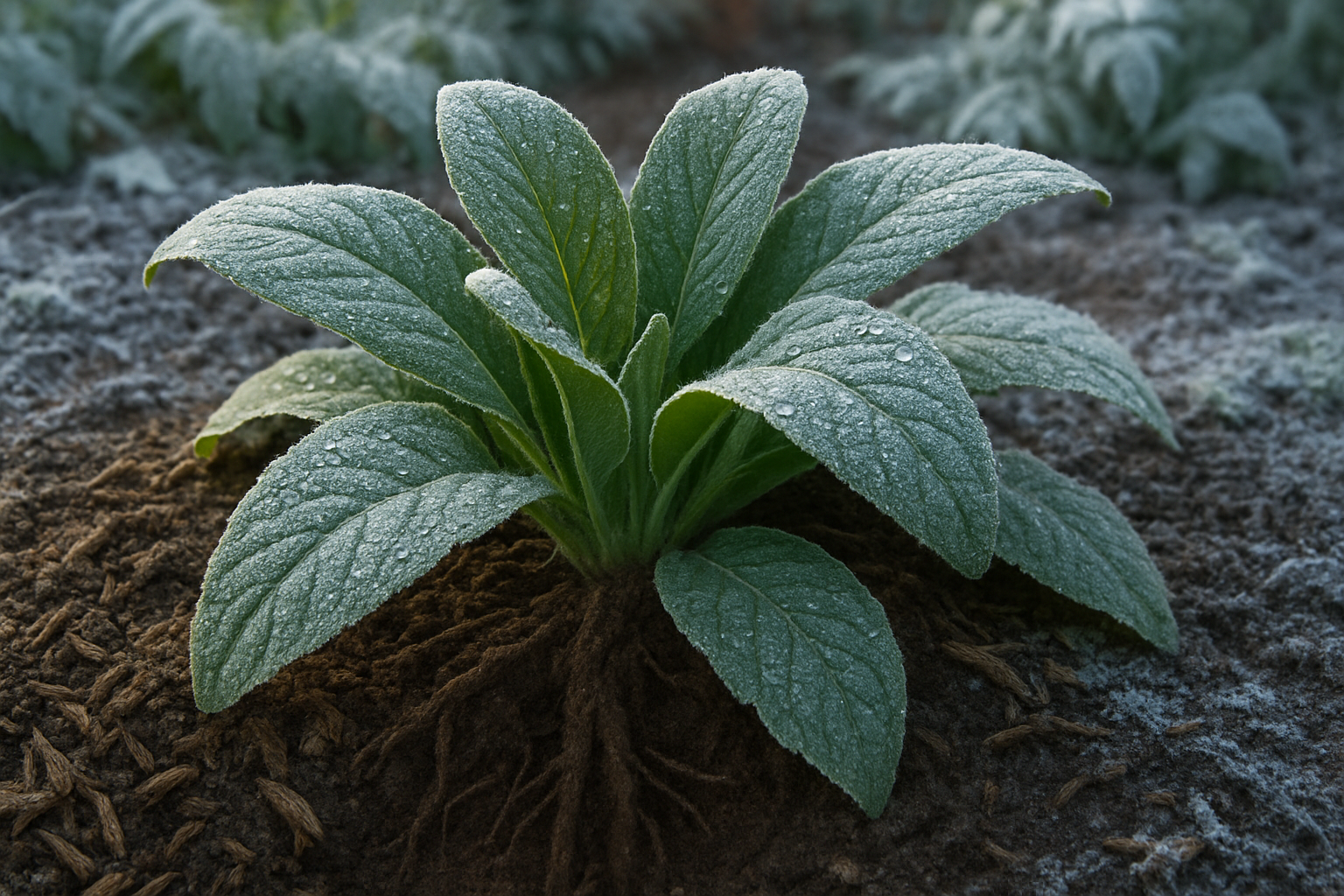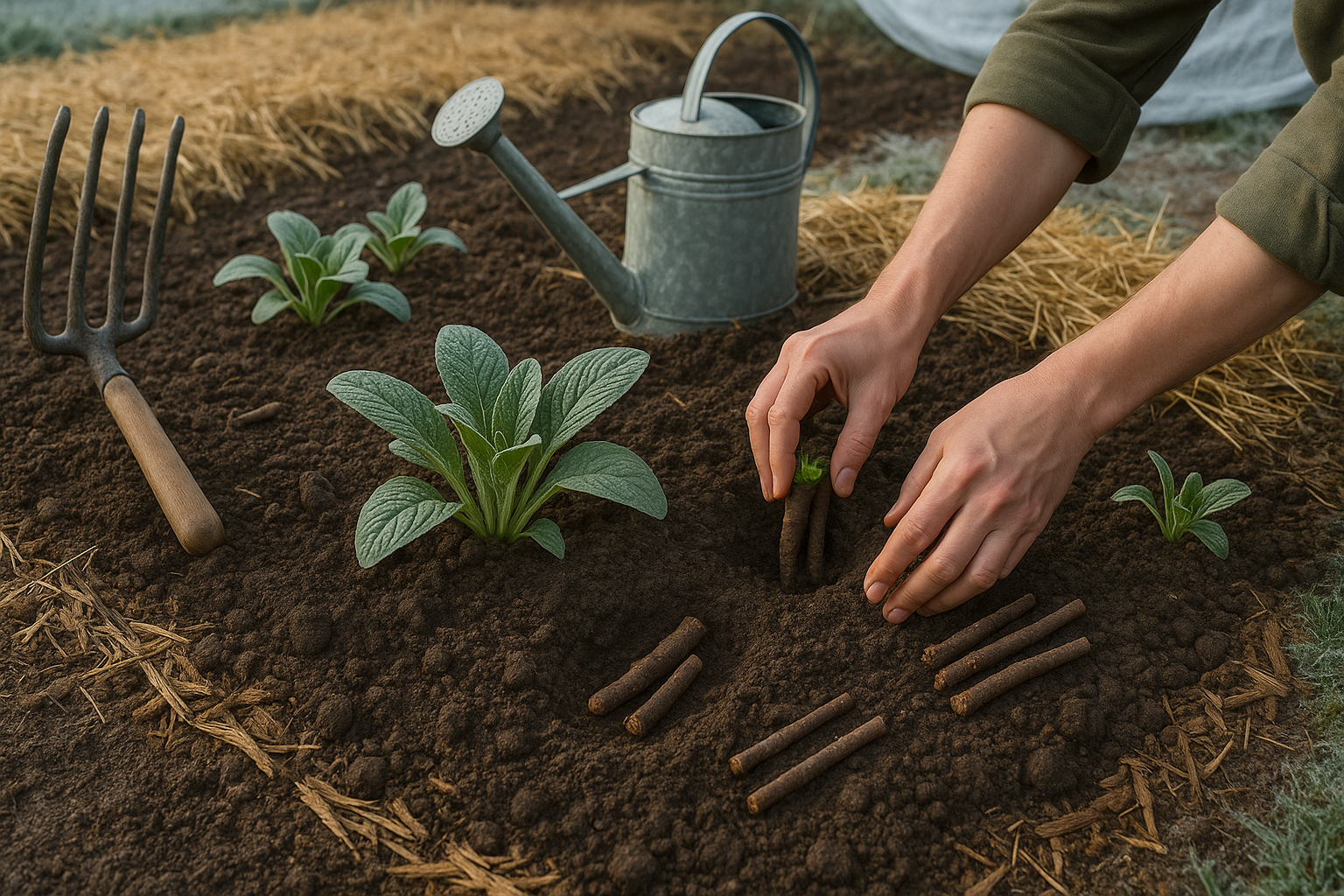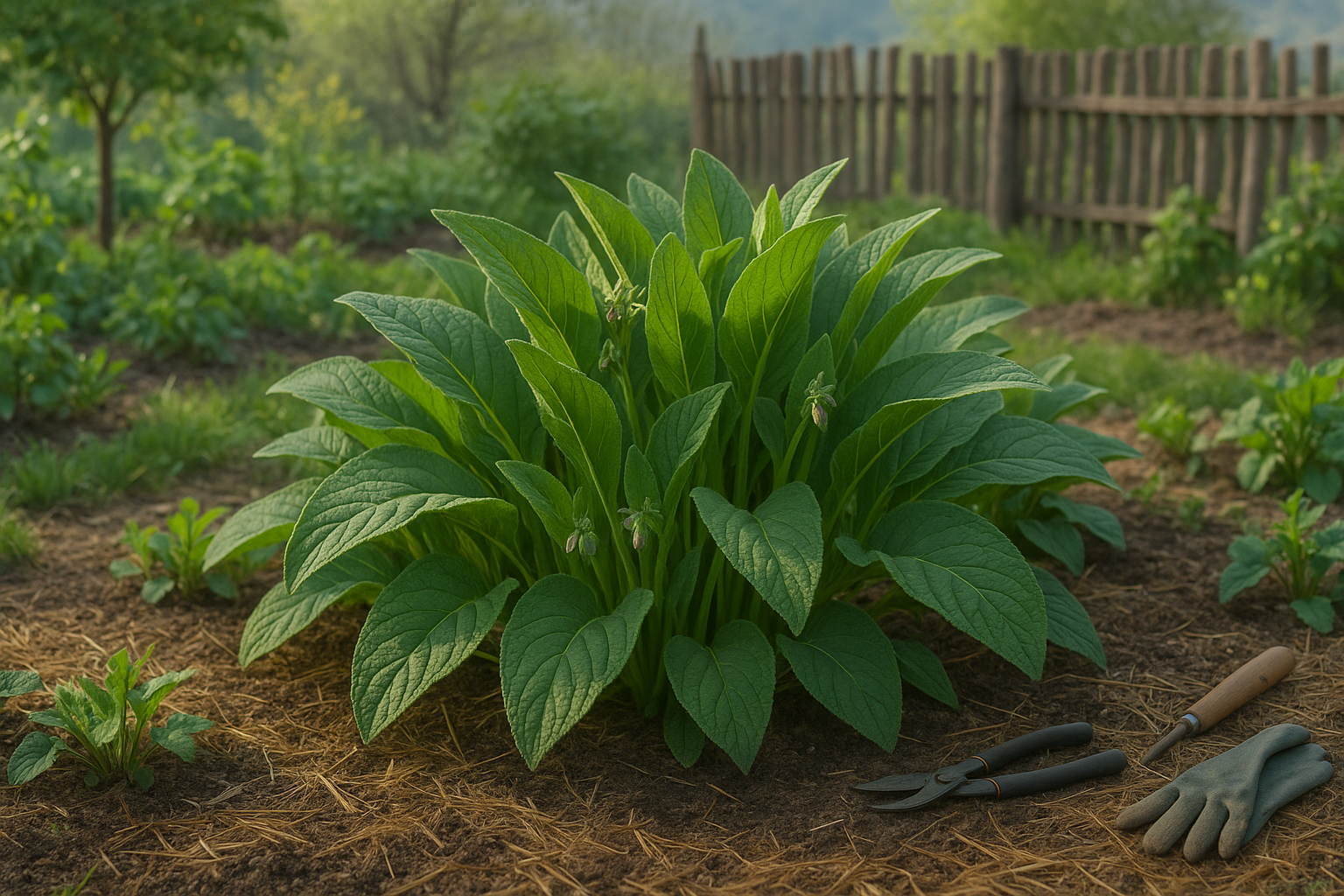Understanding Comfrey and Its Cold Hardiness

Comfrey (Symphytum spp.) is a powerhouse herb popular in gardening and permaculture circles. It’s prized for its ability to enrich soil, produce abundant biomass for compost, and attract pollinators. The two main species grown by gardeners are common comfrey (Symphytum officinale) and Russian comfrey, each known for their robust cold hardiness and resilience.
Common comfrey is typically hardy down to USDA zone 4, while Russian comfrey—especially the Bocking 14 cultivar—is even tougher, thriving in zones as cold as 3. These zones often experience harsh winters with freezing temperatures, yet comfrey’s deep roots and hardy nature enable it to bounce back each spring, making it a reliable perennial in cold climates.
In USDA zones 3–5, gardeners often see comfrey leaves die back after the first frost, but the plant reliably regrows when temperatures warm up. This persistence means it can provide valuable mulch and green manure even in areas where other perennials struggle to survive the winter.
Because comfrey is unfazed by cold and returns vigorously year after year, it’s an especially valuable asset for northern gardeners who want to build healthy soil and support resilient, sustainable gardens—no matter how long or harsh the winter may be.
Choosing the Right Comfrey Variety for Cold Climates
When selecting comfrey for cold climates, it’s important to know that not all varieties tolerate harsh winters equally. The most common types are true or common comfrey (Symphytum officinale) and Russian comfrey, often known by its Bocking numbers—selectively bred strains.
Russian comfrey, especially the sterile hybrid Bocking 14, is favored by northern gardeners because it reliably survives deep freezes and comes back strong every spring. Unlike common comfrey, which may reseed aggressively or struggle with severe frost, Bocking 14 stays put and thrives in USDA zones 3-9, making it one of the most adaptable options for cold regions.
Its deep roots withstand winter heaving, allowing it to send up vigorous shoots as soon as the soil warms. For sourcing, look to reputable nurseries specializing in permaculture or organic gardening supplies—sites like Strictly Medicinal Seeds, Fedco, or even local gardening groups on Facebook often offer cold-hardy crowns or root cuttings. Ordering in early spring maximizes your planting window for a robust, winter-proof comfrey patch.
Site Selection and Preparing to Plant Comfrey
For gardeners in cold climates, comfrey thrives best in full sun but can also tolerate partial shade, making it flexible for various spots in your yard. Choose a site with loose, well-drained soil—heavy clay or soggy areas can stunt root development and make winter survival difficult.
Before planting, clear the area of weeds and rocks, then amend the soil with plenty of organic matter like compost to give the roots a strong start. Mulching with straw or chopped leaves in late fall helps insulate comfrey crowns against winter’s freeze-thaw cycles. Additionally, staking or windbreaks can protect young plants from harsh, drying winds.
Because comfrey develops deep taproots and is notoriously difficult to move once established, pick a permanent location with at least 2 to 3 feet between plants. This spacing gives each plant room to mature and ensures you won’t have to disturb the deep roots during future gardening projects.
Thoughtful site preparation and protection help comfrey come back strong year after year.
Planting and Establishing Comfrey in Cold Weather

In colder regions, the best time to plant comfrey is early spring, once the risk of hard frost has passed, or early fall when the soil is still warm but extreme cold hasn’t set in. For home gardeners, planting comfrey using either crown divisions or root cuttings works well.
Crown divisions—small sections of the main plant with both root and shoot—tend to establish quickly, while two-to-four-inch-long root cuttings are cost-effective and reliable. Space your comfrey plants about two feet apart; they’ll spread and fill in quickly by the next season.
During the first year, water your young comfrey regularly, especially in dry spells, to help them build deep roots. Lay down a thick mulch of straw, leaves, or compost around the base to insulate the soil, suppress weeds, and retain moisture.
If a late frost sneaks in after planting, cover emerging shoots with garden fleece or an inverted bucket overnight to prevent damage. These steps ensure your comfrey gets off to a strong, healthy start despite chilly weather.
Comfrey Care and Cold-Weather Maintenance
Caring for comfrey in cold climates involves a few proactive steps to ensure your plants return strong in the spring. As temperatures drop in late autumn, apply a thick layer of organic mulch—such as straw, shredded leaves, or compost—around the base of your comfrey. This insulates the roots from freezing and helps prevent frost heave, a common issue in colder regions.
During winter, watch for signs of cold stress: wilted or blackened leaves, soft crowns, and mushy stems can indicate damage from sudden freezes. If a deep freeze is expected, drape frost cloth or old blankets over the plants for extra protection. Remember to remove these coverings during milder spells to avoid trapping excess moisture.
As the snow melts in early spring, clear away old mulch to allow the soil to warm up and reduce the risk of fungal diseases. Comfrey usually bounces back vigorously, but early feedings of well-rotted manure or a balanced organic fertilizer in late spring help promote lush growth and recovery.
Be vigilant for pests like slugs hiding in decaying foliage, and watch for signs of root rot or blackened crowns, especially in poorly drained areas. Remove damaged plant parts promptly and thin overly dense patches if needed to improve air circulation and lower disease risk.
Harvesting Comfrey and Using It in Your Garden
For gardeners dealing with short growing seasons, timing is key when harvesting comfrey leaves. Wait until your comfrey plants are at least a year old and about 18 inches tall before the first harvest—typically late spring to early summer.
Use sharp pruners or garden shears to cut the leaves about 2 inches above the crown. This encourages healthy regrowth and lets you harvest two to four times per season without stressing the plant. Avoid taking all the leaves at once; always leave some to help the plant recover.
Once harvested, comfrey leaves make an excellent compost activator due to their high nitrogen content. Simply layer them into your compost pile to speed up decomposition.
You can also use the leaves as nutrient-rich mulch—lay them around the base of your plants for a slow nutrient release—or soak them in water for a few weeks to create a potent liquid fertilizer.
If you have chickens or livestock, offer small amounts of fresh comfrey as a protein-rich treat, but don’t overdo it—moderation is best.
Troubleshooting Common Problems in Cold Climates
Cold climates bring unique challenges for comfrey gardeners, such as crown rot, frost heave, and animal browsing.
Crown rot often develops in soggy, poorly drained soil. To prevent this, improve drainage by planting comfrey on raised beds or by adding organic matter to lighten heavy soil.
Frost heave, which pushes plants out of the ground due to freeze-thaw cycles, can be reduced by applying a thick winter mulch of straw or leaves around the base of the plants. Just be sure to re-mulch as needed in early spring.
Hungry deer, rabbits, and rodents may browse comfrey leaves when other food is scarce. Keep them away with sturdy fencing or protective wire mesh.
Remember, comfrey is tough but may die back severely or look ragged some years—don’t despair. With a bit of extra care and patience, most plants will bounce back stronger each spring, rewarding your diligence with fresh, vigorous growth.
